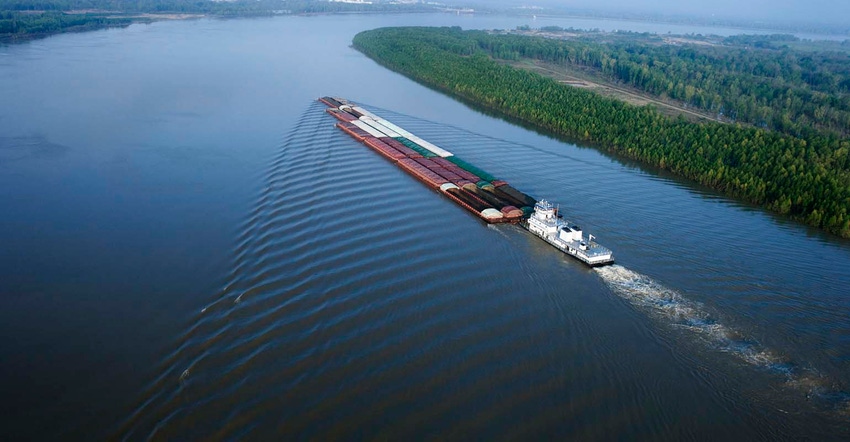August 30, 2019

The nation’s primary inland waterways system, which includes the Mississippi, Arkansas, Illinois, Ohio and Tennessee rivers and the Gulf Intracoastal Waterway, carries about 60% of U.S. corn and soybean exports with a combined value of $17.2 billion.
A report, “The Importance of Inland Waterways to U.S. Agriculture,” used economic modeling to forecast the impacts to the U.S. economy and agricultural competitiveness in global markets from three investment scenarios.
Here’s a look at three investment scenarios:
Status quo investment of $29.6 billion for new construction, rehabilitation and maintenance. The total cumulative economic impact to 2045 is $185 billion GDP; 395,000 employment and sales of $354 billion.
With increased funding of $6.3 billion to construct all authorized projects in 10 years, a total investment of $35.9 billion, the employment rises 20% from status quo to 472,000, the GDP rises 40% to $258 billion and sales rise 40% to $96 billion.
With gradually decreasing funding through 2045 for operation and maintenance and no construction of authorized projects, funding totals $15.3 billion, a decrease of $14.3 billion from the status quo. Under this scenario, employment is 18% less than status quo at 323,000; GDP is 38% less at $115 billion and sales are $220 billion, a 38% decrease.
What are the waterway benefits by state?
The total benefits of the waterways system varies from $4,827 million in Illinois to $552.8 million in Louisiana. Other states that benefit from the river system include Iowa, $3,260 million; Minnesota, $1,728 million; Missouri, $1,736 million; and Arkansas, $1,588 million.
Source: USDA Agricultural Marketing Service, which is solely responsible for the information provided and is wholly owned by the source. Informa Business Media and all its subsidiaries are not responsible for any of the content contained in this information asset.
Read more about:
TransportationYou May Also Like




